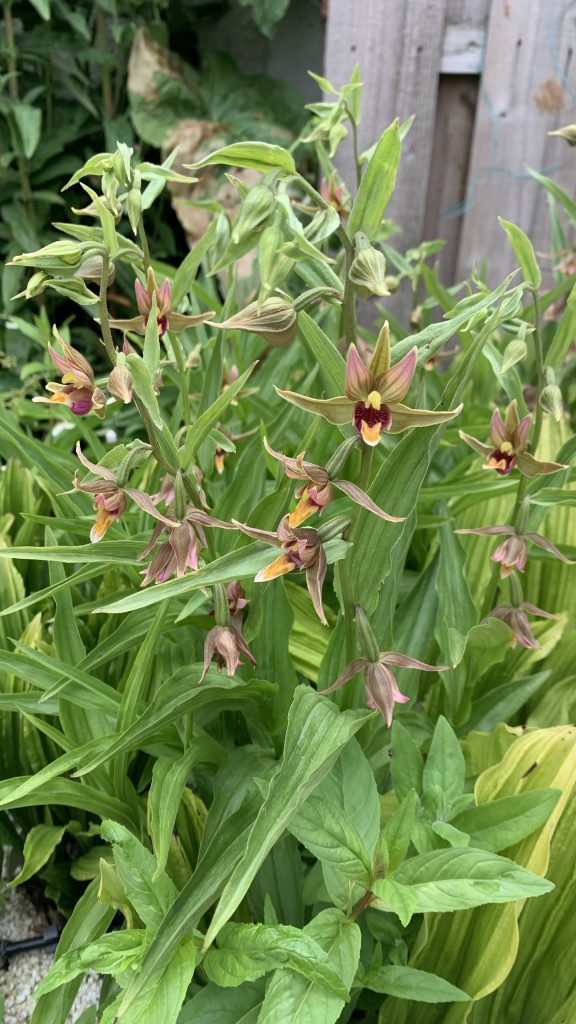Sheffield & District Orchid Society

Definitions: Hardy orchids are those that grow in the ground in temperate climates similar to our own. They are deciduous, i.e., lose their leaves prior to a period of dormancy and they are able to withstand frost provided their roots are not water logged. By this definition, Pleiones are not hardy orchids, as they require a minimum winter temperature of +2°C and therefore would not normally survive winters in the British Isles. British orchids have either tubers (like potatoes) or rhizomes (an underground, horizontal stem of a plant that often sends out roots and shoots from its nodes, like the Lily of the Valley).
Cultivation – in a Nutshell (quote from the Hardy Orchid Society Website) use an open compost, do not allow plants to dry out, feed them with weak fertiliser, shade them on hot summer days, protect them from slugs and snails.
Prepare the ground, ensuring that the soil is not too heavy and does not dry out in the summer. On heavy soil, incorporate large quantities of compost, grit and other materials that promote drainage. Or you could grow them in a raised bed or in a large pot or tub where you can give them more personal attention. Plant them with 3 – 5 cm (11⁄2 inches) of soil above the growing tip. Cover with a layer of mulch. In nature, they would be among grasses and wild flowers, which would protect from direct sunlight that may burn the young shoots, also from wind which would dry out the soil surface. It is therefore best to plant them facing east, west or even north, so that they don’t get scorched by the midday sun. Inspect the soil regularly and water if it appears dry. Hardy orchids must never dry out at the roots or they will die. Most hardy orchids grow happily on any soil, but some require acid soils. If you live in an area with chalky soil, the acid lovers should be potted in large pots or tubs or in specially prepared beds containing ericaceous compost, mixed with horticultural grit, 1 part per volume soil to 1 part per volume grit. In the spring, protect from slugs and snails. As plants increase, you can divide them in late summer, if needed, taking care not to damage the new underground shoots which will be next year’s leaves and flowers.